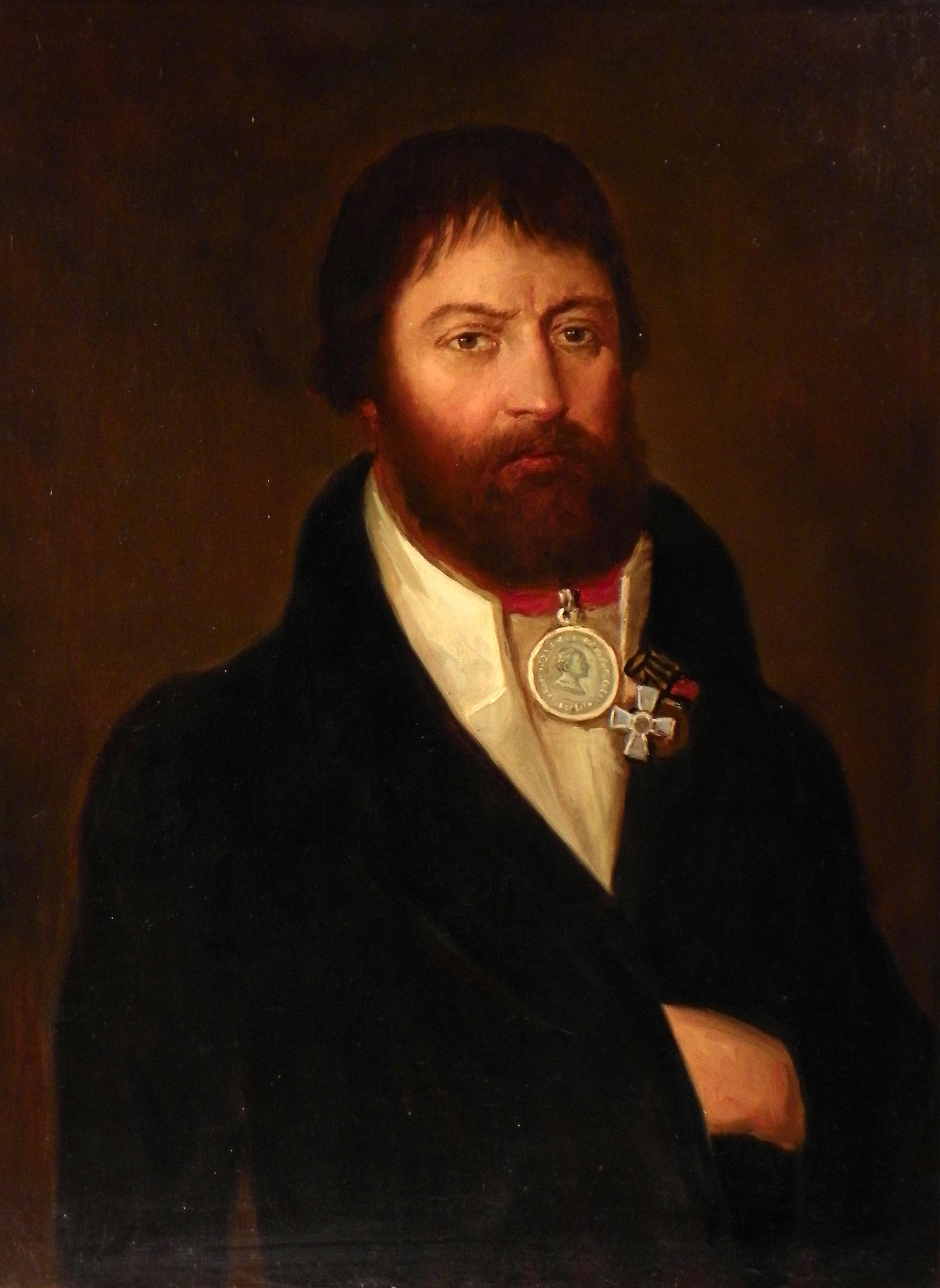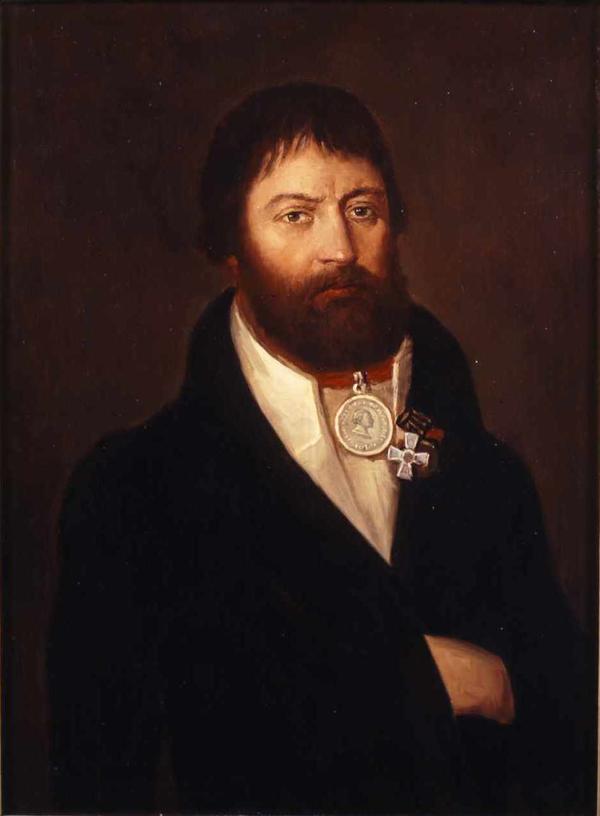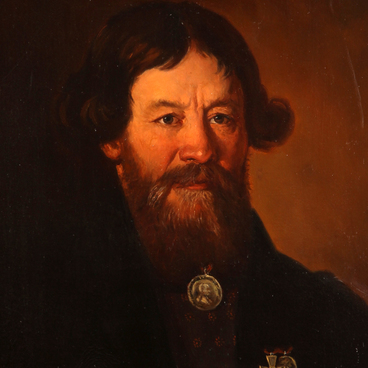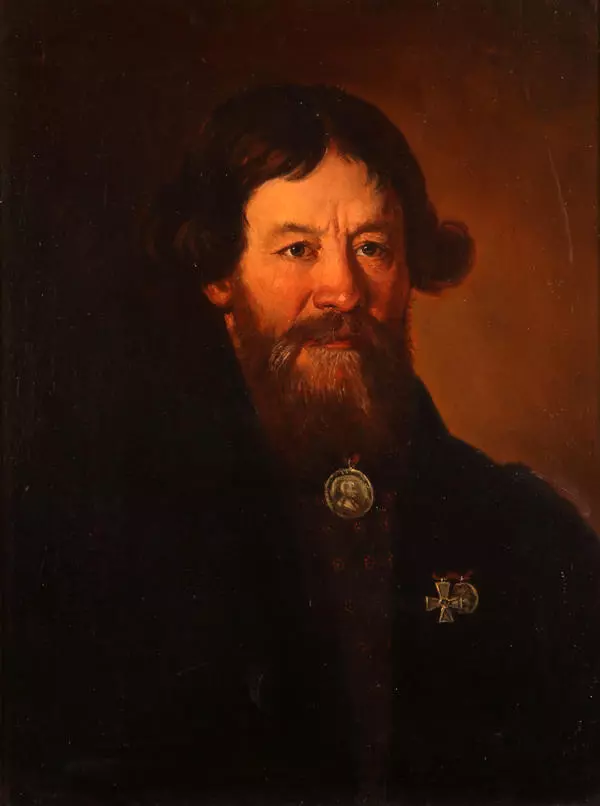Gerasim Kurin is a Russian peasant whose name has become legendary. He lived in the village of Vokhna of Bogorodsky province (today, it is a district of Pavlovsky Posad) in 1777–1850. According to modern day historians, Gerasim Kurin was the son of a Suvorov soldier. Being a man of straightforward and frank character, clever and possibly even literate, he was respected by the villagers.
In the autumn of 1812, when the 3rd Corps of the French troops under the command of Marshal Michel Ney entered the territory of Bogorodsky province, many of the rural peasants hid in the woods. Having decided to defend their land from the invaders, they banded together to make an army of partisans and appointed Gerasim Kurin to be their head.
At first, there were only a few dozens of people under Kurin’s command who acted against small French groups being on foraging duty. Having heard of Kurin’s successes, people from other neighboring villages started joining him. Soon, the army of partisans had grown to several thousand people.
From then on they were able to attack more numerous French regular units. In September 25–27, Kurin managed to free from the enemy some villages, namely Bolshoi Dvor, Subbotino, and Gribovo. The events were heard of by Prince Boris Golitsyn, the Chief of the Vladimir Popular Militia. He allotted 20 Cossacks who helped Kurin to win a series of victories over the enemy in several days.
The greatest victory of the army became the liberation of Vokhna, the main village of the volost, on October 1, 1812. During the assault, the ill-armed partisans managed to defeat two squadrons of the French Dragoons. After many hours of fighting, the peasants succeeded in capturing such items as 20 carts, 85 rifles, 40 horses, 120 pistols and 400 cartridge bags.
Years later, Kurin’s successes were greatly embellished; there existed even a story of him being not a real person, but imaginative hero of peasant partisans. However, at the end of the war, Gerasim Kurin was known to had been awarded the Decoration of the Military Order known as The Cross of Saint George and the medals “For Courage”, “In Memory of the Patriotic War of 1812” and “For the Love of the Fatherland.” He also received a large payment of five thousand rubles in bills. For comparison, a good horse could be bought for 200 rubles, a serf with a family for 400–500 rubles.
After the war, Kurin was appointed the head of Vokhna volost. He lived until the age of 73, and then died in his native village of Vokhna. The portrait of Kurin was painted by the artist Alexander Smirnov in 1813, the original painting is kept in the State Historical Museum.
In the autumn of 1812, when the 3rd Corps of the French troops under the command of Marshal Michel Ney entered the territory of Bogorodsky province, many of the rural peasants hid in the woods. Having decided to defend their land from the invaders, they banded together to make an army of partisans and appointed Gerasim Kurin to be their head.
At first, there were only a few dozens of people under Kurin’s command who acted against small French groups being on foraging duty. Having heard of Kurin’s successes, people from other neighboring villages started joining him. Soon, the army of partisans had grown to several thousand people.
From then on they were able to attack more numerous French regular units. In September 25–27, Kurin managed to free from the enemy some villages, namely Bolshoi Dvor, Subbotino, and Gribovo. The events were heard of by Prince Boris Golitsyn, the Chief of the Vladimir Popular Militia. He allotted 20 Cossacks who helped Kurin to win a series of victories over the enemy in several days.
The greatest victory of the army became the liberation of Vokhna, the main village of the volost, on October 1, 1812. During the assault, the ill-armed partisans managed to defeat two squadrons of the French Dragoons. After many hours of fighting, the peasants succeeded in capturing such items as 20 carts, 85 rifles, 40 horses, 120 pistols and 400 cartridge bags.
Years later, Kurin’s successes were greatly embellished; there existed even a story of him being not a real person, but imaginative hero of peasant partisans. However, at the end of the war, Gerasim Kurin was known to had been awarded the Decoration of the Military Order known as The Cross of Saint George and the medals “For Courage”, “In Memory of the Patriotic War of 1812” and “For the Love of the Fatherland.” He also received a large payment of five thousand rubles in bills. For comparison, a good horse could be bought for 200 rubles, a serf with a family for 400–500 rubles.
After the war, Kurin was appointed the head of Vokhna volost. He lived until the age of 73, and then died in his native village of Vokhna. The portrait of Kurin was painted by the artist Alexander Smirnov in 1813, the original painting is kept in the State Historical Museum.






